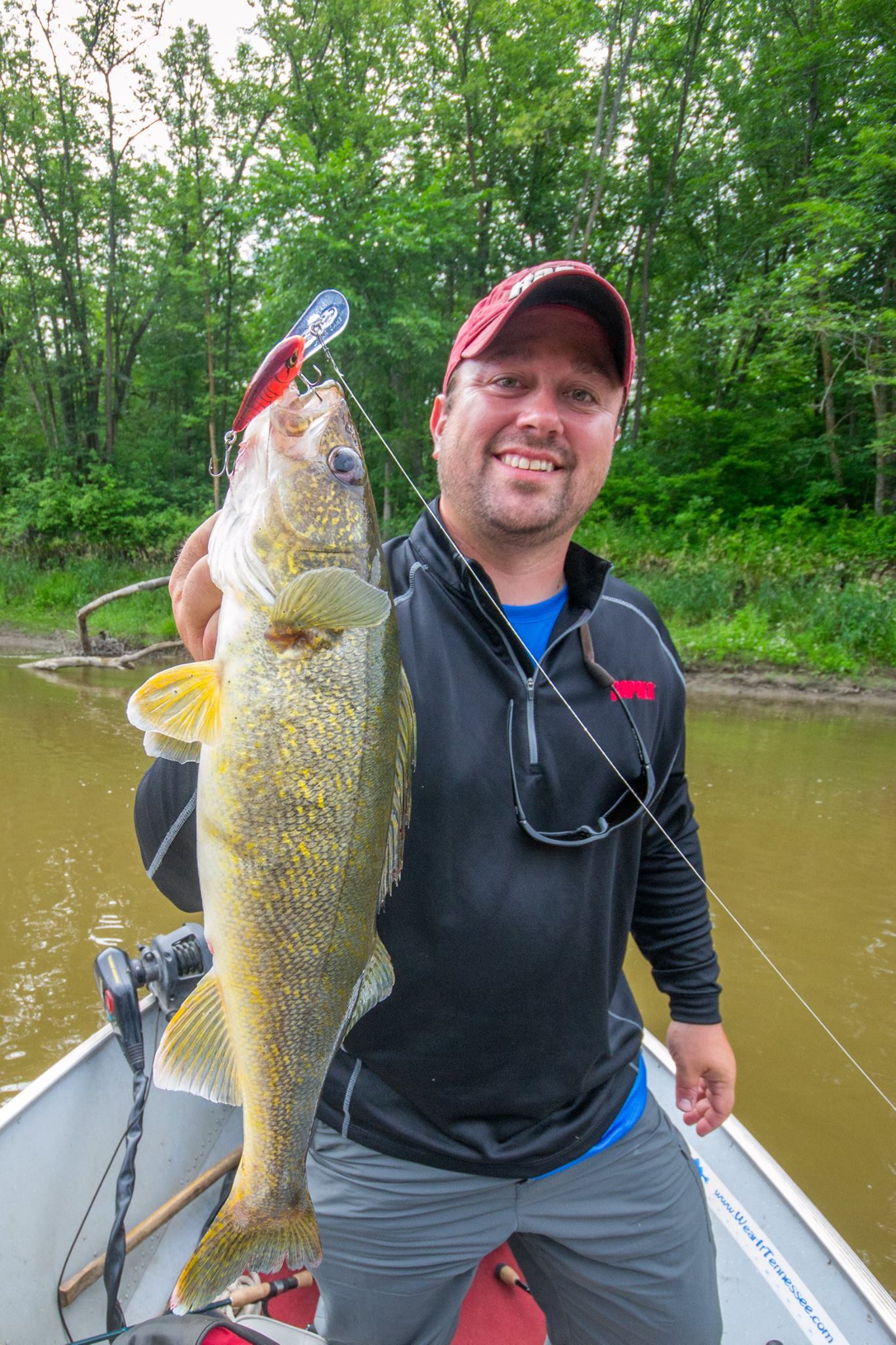Just about everywhere in the Midwest, it’s been the year of the monsoon. Continuous thunderstorm action paired with seasonally high water levels have brought about some spotty fishing, depending on where I’ve been fishing and for what species. Of course, fishing dirty water is always a reality during certain times of the year, but we’re more often used to seeing it in the springtime as meltwater combines with spring showers to both raise water levels and make them more turbid. Big rainfall events can certainly happen during any time of the year, but by the end of July and into August, we’re looking at max evaporation and typically both lower lake and river water levels.
I’m still hoping for lower river water into August, but it remains to be seen whether we’ll ever get it. I’m a big fan of chasing smallies and walleyes on smaller rivers during the later summer and into fall. Most years, those fish have limited options for where they can be, based so often only on water level. This year, it seems that just as levels start to approach “normal,” we see another gully-washer that muddies up the moving water and shuts down fishing.
While it’s usually sound advice to user louder baits, both from an audible and visual perspective, there’s more to muddy water than simply throwing a rattling crankbait. Another play altogether is to avoid it when you can. In bowl shaped lakes especially, shoreline runoff and debris can be a shock to any fish’s system. Evening thunderstorms can often foil the following morning’s fishing in the shallows. Not only is the fishy waterscape rearranged, but water temps have often changed, requiring fish a bit of time to recuperate. In these scenarios, I like to move deeper, where local fish are less likely to be affected by all of the rapid change.
The exception to that rule is in moving water, especially in lakes. Rivers all the way down to small trickles that output into a lake are now alive with flow. The resulting current breaks and seams create logical places for fish to rest, while having a steady conveyor of food headed their direction. This is even more true when there’s access to deep water.
River fishing can be a different scenario, as more underwater real estate means more possible places for fish to hide. It also means the upsetting of the norm and puts fish off of the daily patterns they’d grown accustomed to. In these scenarios, just like in ponds and small lakes, I like to head to the depths to mess with fish that aren’t as bothered by the fish in shallow that see so much difference from day to day. Another play however, is to look for those same current seams as in lakes with rivers dumping into them. Mudlines setup in some systems, and stream color variation can often mean gradients in temperature that draw in certain fish.
Case in point would be river pike that appreciate cold water, but love the security of a little color to the water. Cold, spring fed streams adjacent to larger rivers can be a hotspot for big pike during any part of the open water period, but are especially attractive when a good mudline sets up. It allows them to hunt well and be comfortable doing it. Walleyes and smallies are much the same as they can position themselves in cooler, slower water while having access to what the big muddy is moving downriver.
Dirty water in river situations usually means higher water, but it also means faster water. You need to consider what your bait is doing when moving along much faster. It often means re-tuning crankbaits so they don’t blow out, and selecting slightly heavier jig sizes to stay down in heavy current. That’ll usually influence your rod selection too, as most medium light walleye rods won’t handle the weight of a ½ oz. jig or more very well. That’s when some specialized sticks can really yield dividends.
Live bait gets a bit trickier in river situations too when there’s so much current. Most often, fast water means more snagging up, both on the new debris being washed down and the fact that your bait ends up settling in to more sticky situations when you have less control over it. Minnows are heartier than crawlers, and leeches do pretty well in current as well if that’s your persuasion.
That said, fast, dirty water is a great time to try hard and soft baits alike, given the vibration and colors they sport. Crankbaits are great search tools in lakes and rivers both during dirty water periods, as fish have an easier time finding them then traditional lures and more subtle offerings. Even plastics give off vibration, especially boot-tail and large curly-tail varieties. Of course, both offer the advantage is really bright colors that can also help fish find your offering.
The next time you show up to the landing and find all kinds of floating debris up shallow from the previous night’s storm, consider a few refinements to your approach before focusing on your traditional summer tactics.
